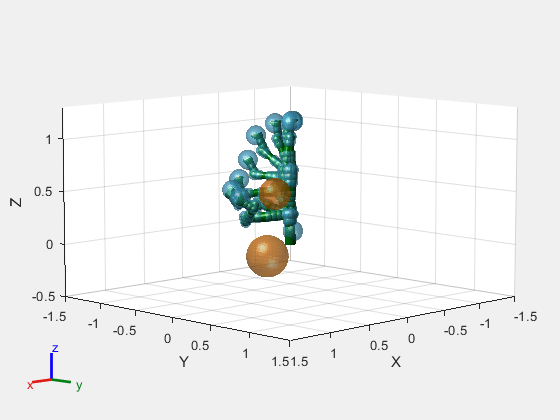chompCollisionOptions
Description
The chompCollisionOptions object stores collision options for
Covariant Hamiltonian Optimization for Motion Planning (CHOMP)
trajectories. Use this object to optimize a CHOMP trajectory to avoid
collisions.
Creation
Description
OPTS = chompCollisionOptions creates a collision options object
OPTS that you can use to optimize a CHOMP trajectory to avoid
collisions.
OPTS = chompCollisionOptions(Name=Value) specifies properties
using one or more name-value arguments.
Properties
Examples
References
[1] Ratliff, Nathan, Siddhartha Srinivasa, Matt Zucker, and Andrew Bagnell. “CHOMP: Gradient Optimization Techniques for Efficient Motion Planning.” In 2009 IEEE International Conference on Robotics and Automation, 489–94. Kobe, Japan: IEEE, 2009. https://doi.org/10.1109/ROBOT.2009.5152817.
Extended Capabilities
Version History
Introduced in R2023a
See Also
optimize | chompSolverOptions | chompSmoothnessOptions | manipulatorCHOMP
